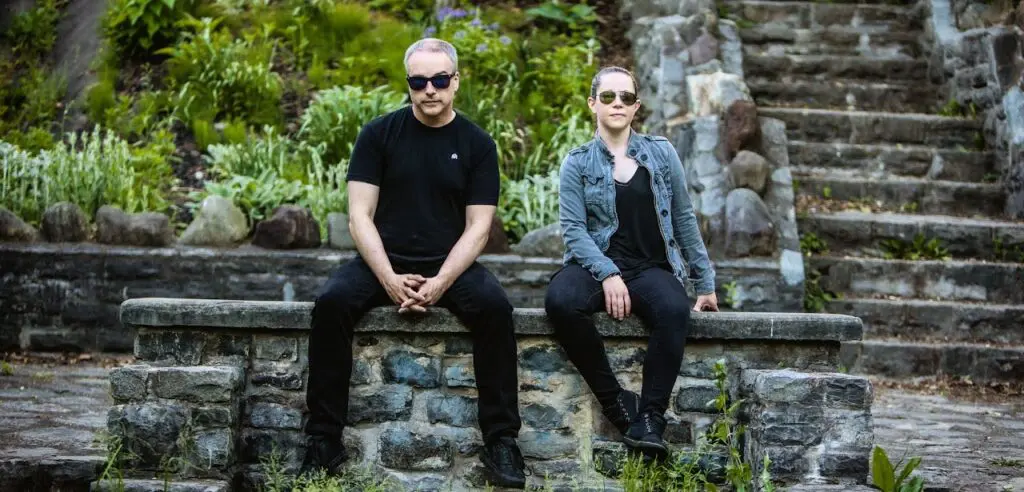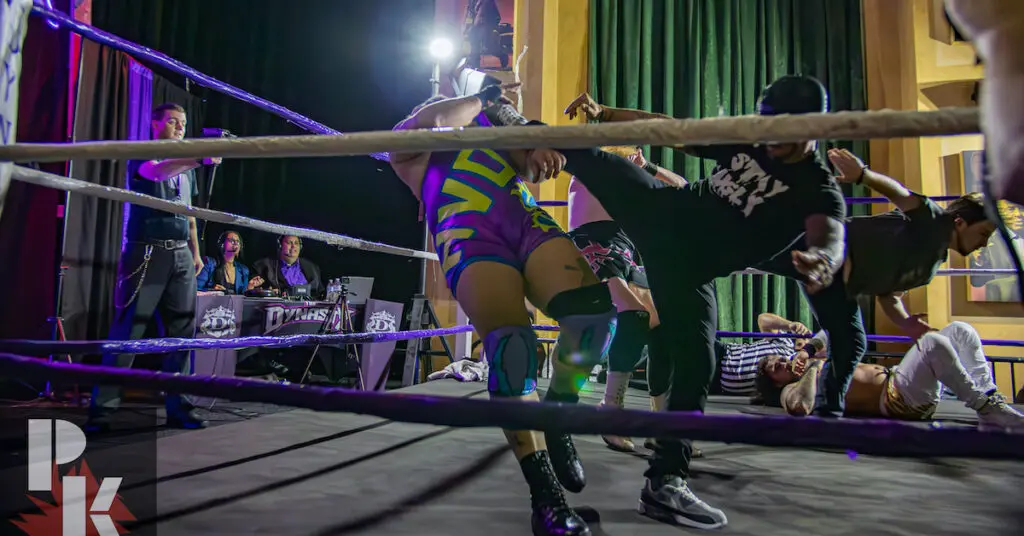Frying Pan Tower (Richard Neal) – An Xperience Interview – by Liam Sweeny.
RRX: So, how are you doing today? I hear, I know that that the weather is crazy.
RN: Yeah, we do have a little bit of rain going on around here. It’s funny, you’ll be driving through a torrential downpour, and then about a half mile away, you’ll be in just beautiful clear skies, and then boom back into it again.
RRX: So you’re not on the Frying Pan Tower right now.
RN: I was able to get off of there the other day, which is a good thing because I had a bunch of stuff to get done back here on land. I’m running around doing that this morning, trying to make sure that we prepare for the next trip, which is just a week away.
RRX: I imagine any time there’s even a hint or a whisper of a hurricane in that area, everybody’s off of there.
RN: Actually, all the guests are, but I myself – if I have an opportunity to be on the tower for one – I most definitely am out on the tower. Quite enjoyable, actually. Sounds a little crazy, but it’s not.
RRX: What brought my attention to the Frying Pan Tower was an article that said, “Oh, the most dangerous hotel in the world.” And I’ve read a couple since then that said basically the same thing. Which is awesome; it’s a cool thing, it’s a selling point. Can you tell me, when you hear that, when they say it’s the most dangerous hotel in the world, is that something you push? Is that something that you agree with?
RN: That, ironically, was an influencer who wanted to do a video about it. And I stipulated as long as he didn’t say that we were a hotel. He went the other way on it and that was very popular. He had 150 million views across his social media, which included a silly part at the end of me dancing like a crazy old man. I don’t want to know if that’s what I would be remembered by, but honestly, we have had people stay on the tower as both volunteers and what we like to call eco-tourists. In other words, they know they’re gonna rough it a little bit. They don’t have to do any work, but they’re going to have basically, for lack of better words, an adventure destination. We will do several things that hotels do; they have their own rooms, they have their internet access, they don’t have to bring anything but a toothbrush. And recently we realized that that was a pretty cheap addition. So you don’t even need to bring that. So, that’s kind of like a wet Airbnb, I guess, although not affiliated.
RRX: So it’s not a hotel but it is a destination. We can say it how you say it, an adventure destination. What makes it the most dangerous adventure destination?
RN: Yeah, quite right. It is in the path of nearly every hurricane to hit the east coast in the last 200 years, that we’re aware of. It is over, I guess you call it, shark-infested waters. We typically have anywhere from 10 to 20 sharks hanging out underneath us. Lots of big barracudas with huge teeth. The weather and the currents can be very unpredictable. Typically, our currents will go from zero to three knots within about a half-hour, which is not good if you’re out there swimming around in it.
Plus, just make one misstep, turn the wrong way in the wrong place, and you could actually step right off from 75 feet up and fall down to the water all that distance below. And I guess you’d also associate it with the fact that it was originally designed to have a life expectancy of 50 years, and we’re just turning 60 this year and doing everything we can to extend its life, so that we can continue to be a research place for scientists, cameras for education, for youth. And quite often, we lend a hand with saving either mariners on boats that are sinking, or scuba divers that are experiencing distress, things like that, heart attacks. And because we have a helipad on top, that makes it easier for the Coast Guard guys to land and just pick up a person, which we did a couple of years back.
RRX: That brings up an interesting thing. In our paper, we actually did an interview with the micronation of Sealand. We interviewed with Prince Liam. Now, you are in international waters as well. They’re more in British waters, but they claim it’s still international in some way, but you’re really in international waters. Like, have you ever thought of declaring sovereignty?
RN: If you want to know a true story, recently in the last year, I had an interaction where I spoke with them. I reached out specifically because I believe that they and we have some very unusual locations with some unusual characteristics. And they said, “Yes, but you’re clearly not serious about it.” I said, “What do you mean? I’ve been doing this for 12, 13, 14 years now.” He said, “Well, you have not declared your own sovereignty and you certainly could,” and I thought, “Hm, well, true.” I didn’t wanna say, you know, we kind of did that 250 years ago from you guys already. So we don’t need to do it again.
But I did mention, and mind you, this was before the October mess over in Israel and all, that maybe we should “declare war upon each other” so we can have a field day with the press. What a fun thing that would be, right? And he did not seem as terribly interested in that, although I thought it would have been a lot of fun from a marketing perspective of awareness.
But the reason we did not declare sovereignty, honestly, was because this is an old Coast Guard lighthouse and they busted their butt to maintain it, build it, and run it and protect mariners and many, many of the people in this area across the whole East Coast.
RRX: What was your scariest moment on Frying Pan Tower?
RN: The scariest was when I had three of my four children and a volunteer on the tower. Many years back, probably 2013 or 2014, we had a helicopter scheduled to pick us up right before a hurricane hit. And that morning, rather than getting on the helicopter, we received a text saying that they had metal in their gearbox and they had to cancel the flight. Good luck. And the waves are already 10 feet tall. So we knew that we couldn’t possibly contact any vessel, and we knew it had been through many storms, but we literally went trial-by-hurricane with my three kids. And, yeah, the waves were huge, 30-foot waves going underneath us, winds over 120 miles an hour. And at one point, as we were eating dinner, one of the back windows where the wind was blowing against it directly, it blew in. And so we all jumped up from the table and went back into this room that looked like one of those horror movies where things are flying around. Well, that room, all the pieces were flying around, ceiling tiles are flying around, and we managed to block that window from the inside and we’re all soaking wet. And I look over at my oldest daughter who looks very, very concerned, and I’m thinking I’ve traumatized her for life. I said, “Emily, I’m so sorry,” and she looks at me funny and she pulls down the front of the oven. She goes, ‘Daddy, my cake fell.” In other words, the change in air pressure caused it to collapse. And so she was upset about that.
So it turned out that my kids are made of tougher stuff than I am. And since then, I’ve done about three or four hurricanes, but we don’t typically take anyone but hardcore researchers out for something like that. Because I was just foolish to invite people into peril, you know, perilous situations. But I’ll go.
RRX: Ok. Oh, just for my own reference – how deep is it from the bottom of the thing to the ocean floor?
RN: The ocean water is 50 ft deep and the main structure itself is 21 meters or 72 feet, whichever you prefer, from the ocean top and the very top of the facility is 135 feet above the water. It’s approximately 6000 square feet; has basically eight bedrooms in it. And yeah, it’s a house. It’s a house with a helipad for a roof.
Author
Staff
You may also like
Continue reading





 RadioRadioX
RadioRadioX